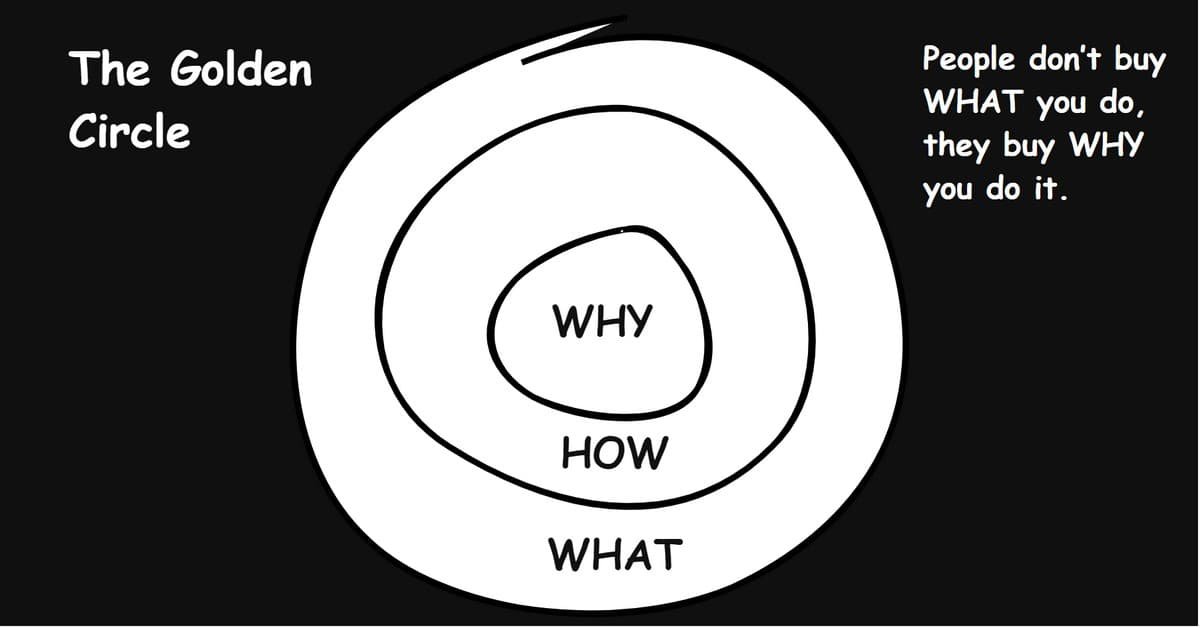
Great leaders don’t just command; they inspire others to take action. One of the most compelling ideas around this is presented in Simon Sinek’s book, Start with Why: How Great Leaders Inspire Everyone to Take Action. In this book, Sinek challenges you to think about why you do what you do, rather than just focusing on the what and how.
Understanding your ‘Why’ helps you build a strong connection with others, which is key to being a successful leader. By starting with why, you can inspire those around you to share in your vision and be more motivated to achieve common goals. This approach can transform your leadership style and the effectiveness of your organization.
On your journey through Start with Why, you’ll learn practical ways to clarify your purpose and communicate your vision. Whether you are a business owner, team leader, or just someone looking to make a bigger impact, this book offers valuable insights on how to inspire and engage others.
Key Takeaways
- Understanding your ‘Why’ helps you build a strong connection with others.
- Starting with why can transform your leadership style and effectiveness.
- The book offers practical ways to clarify your purpose and communicate your vision.
The Golden Circle

The Golden Circle is a concept that helps understand and apply why some leaders and organizations inspire more effectively than others. It focuses on the “Why,” “How,” and “What” of leadership and actions.
Understanding the Concept
The Golden Circle consists of three layers: Why, How, and What. The innermost circle, “Why,” is about the purpose or belief behind an action or organization. It’s the core reason that motivates everything else. The next layer, “How,” describes the process or values that set them apart. Finally, the outer circle, “What,” defines what they do or offer, like products or services.
For example, Apple’s “Why” is to challenge the status quo and think differently. Their “How” involves creating beautifully designed, user-friendly products. “What” they offer are innovative gadgets like iPhones and MacBooks.
Focusing on “Why” first helps build strong connections and trust. People don’t just buy what you do; they buy why you do it.
Applying the Golden Circle
To apply the Golden Circle, start by identifying your “Why.” Ask yourself why your organization exists and what inspires you. This deep reason should be clear and compelling.
Next, define your “How.” These are the actions and processes that make you unique. It could be your approach to customer service, your commitment to quality, or the innovative methods you use.
Finally, state your “What.” This is the tangible product or service you provide. Make sure it’s aligned with your “Why” and “How.”
For example, if you run a bakery, your “Why” might be to bring joy and comfort to your community. Your “How” could be using family recipes and sourcing local ingredients. Your “What” would be the delicious baked goods you sell every day.
By following the Golden Circle, you can inspire loyalty, build trust, and stand out in your field.
Leadership Insights
Great leaders know how to inspire others and build trust. They ignite action in their teams and establish strong, trust-based relationships.
Inspiring Action
Effective leaders motivate their teams by clearly communicating the “why” behind their actions. Instead of just giving orders, they explain the purpose and impact of the task. This understanding creates a sense of ownership and drives enthusiasm.
Setting a common goal helps people feel united and purposeful. Use stories and real-life examples to make your message relatable and memorable. Focus on what matters most to your team and how their work contributes to the bigger picture. Authenticity is key; when you believe in your message, others will too.
The Role of Trust
Trust forms the foundation of leadership. It is built through consistency and transparency. When you follow through on promises and are open about challenges, your team feels secure and valued.
Trust also encourages collaboration. Team members are more likely to speak up, share ideas, and take risks when they feel trusted. Create a safe environment where mistakes are seen as learning opportunities. Regularly check in with your team and listen to their concerns.
By fostering trust, you not only improve team dynamics but also boost overall productivity and morale.
Biological Basis
The way you make decisions and feel about those decisions is influenced by specific parts of your brain.
The Human Brain and Decision-Making
Your brain can be divided into three main parts: the neocortex, the limbic system, and the reptilian brain. The neocortex is responsible for logical thinking, language, and reasoning. When you process complex information or solve problems, it’s the neocortex that’s hard at work.
The brain’s different parts work together, but they can sometimes clash. For example, if you make a choice based only on logic, your feelings might disagree.
The Limbic System and Feelings
The limbic system handles your emotions and is key to the “why” in your decisions. It’s made up of several structures, including the amygdala and hippocampus. These parts influence your mood, motivation, and emotional responses.
When you connect with something emotionally, it’s often your limbic system reacting. This part of your brain doesn’t use language, so your feelings can be strong and instinctual. If you feel excited or passionate about a decision, your limbic system is triggering those feelings.
Discovering the Why

Understanding why you do what you do can lead to more passion and clarity in your actions. It helps guide you in making better decisions and inspires those around you.
The Importance of Starting with Why
Starting with why gives purpose to your actions. When you know why you are doing something, it makes everything else clearer.
For leaders, this means their teams understand not only what to do but why they should do it.
This connection builds a sense of belonging and motivation. It turns ordinary tasks into meaningful efforts.
Finding Your Personal Why
Finding your personal why means discovering what drives you deep down. It can be something you’re passionate about or a belief that fuels you.
Start by asking yourself questions like:
- What are you passionate about?
- What change do you want to see in the world?
- What values are most important to you?
Reflecting on these questions can help uncover your core motivations.
Understanding this makes your path clearer and your actions more impactful. This self-awareness helps in aligning your personal goals with your actions.
Building a Why-Centric Organization
Creating a why-centric organization means embedding a sense of purpose into everything. Leaders should focus on incorporating this purpose into their hiring process and maintaining the right culture.
Hiring for Why
When you hire, look for people who share your organization’s purpose. Start by asking questions that reveal what motivates candidates. For example, “Why do you want to work here?” or “What work are you most passionate about?”
Use job descriptions to highlight the importance of your organization’s mission. Make sure potential hires understand why your company exists and how their role contributes. This will help attract like-minded individuals who are excited to join and contribute to the bigger picture.
During interviews, assess if candidates align with your values. Look beyond skills and experience. Pay attention to how they react to scenarios related to your mission. Ask for stories of past experiences that show alignment with your organization’s purpose.
Maintaining a Why-Focused Culture
Once you have the right people, keep the focus on your purpose. Regularly communicate your organization’s mission in meetings, newsletters, and internal communications. This keeps everyone aligned and reminds them why their work matters.
Celebrate successes that reflect your mission. Highlight team members who embody your organization’s purpose, both in big projects and daily tasks. This reinforces the importance of staying true to your core values.
Provide opportunities for employees to connect with your mission. Organize team-building activities and volunteer events that tie back to your organization’s purpose. This helps strengthen their bond with the mission and each other.
Encourage feedback and open dialogue about the organization’s direction. Create spaces where employees feel comfortable discussing their ideas and concerns. This ensures that everyone remains engaged and connected to the why behind your organization.
Communicating Your Why
To inspire others, you need to clearly explain why your cause or idea matters. This involves effective messaging and consistent clarity.
Messaging and Marketing
When you talk about your “Why,” your message should connect emotionally with people. Start with stories that show what you believe in. Use simple and clear language to make your message easy to understand and remember.
Create marketing materials with your core message always in focus. Whether it’s a brochure, a social media post, or a speech, make sure everything aligns with your central purpose. Test different ways to present your “Why” and see what gets the best response from your audience.
Clarity and Consistency
Be clear about your “Why.” Avoid jargon and complicated words that might confuse people. Use straightforward language so anyone can grasp your message quickly. Clarity helps build trust and makes your message more powerful.
Stay consistent. Repeat your core message in every communication. This includes emails, meetings, and advertisements. Consistency helps people remember your “Why” and keeps your message strong over time. Make it a habit to align your actions with your stated purpose so that everything you do reflects your core belief.
Challenges and Successes
Examining both the successes and failures helps you understand how implementing “Start with Why” can impact your team or organization. These real-life examples offer insights into the practical application and potential pitfalls.
Case Studies of Why at Work
Several companies have successfully implemented Simon Sinek’s ideas. Apple, for example, uses “Why” by focusing on innovation and user experience, which has helped it become a leader in technology. The company’s clear purpose inspires workers and attracts loyal customers.
Southwest Airlines is another example. They emphasize customer service and affordable travel, which makes their organization more than just an airline. Employees know their work helps bring communities together.
In non-profit organizations like charities, a strong “Why” can mean increased donations and volunteer support. charity: water demonstrates this by highlighting the importance of clean water, motivating supporters and driving their mission forward.
Learning from Failures
Not all companies succeed with “Start with Why.” Some misunderstand or misapply the concept. A tech startup might focus too much on their product’s features instead of the core purpose, leading to a disconnect with customers and employees.
Lack of clarity is a common problem. If your team doesn’t clearly understand the “Why,” they may feel confused and unmotivated. A retail company that only emphasizes sales numbers without a greater purpose might struggle with high employee turnover.
Miscommunication also leads to failure. If a non-profit fails to communicate its “Why” effectively, they might lose potential donors and volunteers. Clear messaging is essential to maintaining support and engagement.
Sustaining the Why
To make sure the “Why” stays alive, you need strong leadership and the ability to innovate and adapt.
The Role of Leadership
Leadership shapes how well the “Why” is kept alive. As a leader, your job is to keep reminding everyone of the purpose behind what you do.
Show the “Why” in your actions. When leaders live and breathe the core purpose, it inspires everyone else to do the same. This means being a role model and making decisions that align with the core beliefs.
Communication is key. Talk about the “Why” often and in different ways. Meetings, emails, and one-on-one talks can help keep the message fresh.
Involve your team. Let them share their ideas and experiences. This creates a sense of belonging and keeps everyone connected to the “Why.”
Innovating and Adapting
Keeping the “Why” alive means being open to change. Things move fast, and staying still can make your “Why” feel outdated.
Encourage creativity. New ideas can help keep your purpose relevant. Let your team know that thinking outside the box is welcome.
Stay updated with trends. Know what’s happening in your industry and adjust your approach when needed. This keeps your “Why” aligned with current needs and challenges.
Solve new problems. When unexpected issues come up, use them as chances to show how your “Why” guides your actions. This makes your purpose more than just words; it’s a practical tool to face challenges.
Frequently Asked Questions
“Start with Why” by Simon Sinek explores the reasons why some leaders and companies achieve remarkable success. It emphasizes the importance of knowing your purpose and the role of inspiration in effective leadership.
What are the core principles outlined in ‘Start with Why’?
The book emphasizes three main principles. First, leaders should always start with “why” – their purpose or belief. Second, they should understand that people buy into the “why” more than the “what.” Third, successful leaders communicate from the inside out, starting with “why.”
How does ‘Start with Why’ explain the impact of inspiration in leadership?
The book explains that inspiring leaders understand the deep-seated reasons behind their actions and communicate this effectively. They create a sense of belonging and shared purpose, which motivates and drives people. Inspiration leads to lasting loyalty and trust.
Can you summarize the main takeaways from Simon Sinek’s TED talk on ‘Start with Why’?
In the TED talk, Simon Sinek discusses the power of starting with “why.” He uses the example of successful companies like Apple and leaders like Martin Luther King Jr., to explain how people are inspired by a clear sense of purpose and vision.
How does ‘Start with Why’ differentiate between leading and managing?
Leading is seen as inspiring people to follow a vision. It’s about setting a direction based on a strong sense of “why.” Managing, on the other hand, is more about organizing and directing tasks. Leaders create the vision; managers ensure it is executed effectively.
What are some notable leadership quotes found in ‘Start with Why’?
Some notable quotes include: “People don’t buy what you do; they buy why you do it.” Another one is, “The goal is not to do business with everybody who needs what you have. The goal is to do business with people who believe what you believe.”
What is the ‘Golden Circle’ model proposed by Simon Sinek in ‘Start with Why’?
The ‘Golden Circle’ model consists of three concentric circles: ‘Why’ at the center, ‘How’ in the middle, and ‘What’ on the outside. It illustrates that great leaders and companies start with “why” (their purpose), move to “how” (their process), and finally to “what” (their product or service).
Related content: